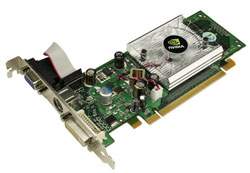Consumers Spend More on Peripherals Than PCs?
A recent report indicates that consumers spend more on upgrades and peripherals than they do on the actual rig.
At first the IDC report indicating that consumers spent more money on PC peripherals than they did on the purchase of the actual PC seemed rather bogus. However the term "peripheral" doesn't just apply to mice, keyboards, and a good speaker system. Rather, consumers dumped money into upgrades such as new graphics cards, hard drives, additional RAM and more.
Now that makes sense.
The report took a look at 2009's figures from the PC sector. As jobs and wallets took a big hit resulting from a tanked economy, the PC industry started to suffer as well--except for the PC accessories market which remained "vibrant and expanding." In fact, U.S. consumers spent at least $1.05 on PC accessories and peripherals for every $1 spent on a PC. This number was actually higher than 2008's numbers of $0.87 spent per dollar.
According David Daoud, research director, Personal Computing, the research behind the report was meant to reveal numbers generated from the accessories market, a factor that had not been adequately tracked in the past.
"With the trend of a multi-PC per user environment, the accessories market will play a growing role in insuring seamless integration of all the devices in businesses and households," he said. "The need for solutions to enhance user experience, improve productivity, and secure users' computing environment mean that the accessories market will continue to expand going forward."
The report also notes software as part of its overall peripheral classification, indicating that security and anti-spam software also propelled revenue in the accessories sector. U.S. small businesses--those with less than 100 employees--actually spent $2.7 billion on "Beyond-the-Box" products, accounting for nearly 24-percent of their computer shopping budget.
Get Tom's Hardware's best news and in-depth reviews, straight to your inbox.

Kevin Parrish has over a decade of experience as a writer, editor, and product tester. His work focused on computer hardware, networking equipment, smartphones, tablets, gaming consoles, and other internet-connected devices. His work has appeared in Tom's Hardware, Tom's Guide, Maximum PC, Digital Trends, Android Authority, How-To Geek, Lifewire, and others.
-
Onus You could kill a lot of convicted spammers on the money spent on anti-spam software; much more permanent fix.Reply -
rantoc Not that surprised by the report, a lot of people aren't that tech accustomed and buy the cheapest cheapest machines but they do like the "ohh shiny" factor so they purchase all kinds of peripherals around it to make it look way even when its still a 2-3 generations old machine... (much like most peoples first car =)Reply
-
xurwin ReplySo what exactly isn't a peripheral according to this report?
and whats with the video card picture? -
theuerkorn ReplyHowever the term "peripheral" doesn't just apply to mice, keyboards, and a good speaker system. Rather, consumers dumped money into upgrades such as new graphics cards, hard drives, additional RAM and more.
So, by that definition almost everything shy the CPU counts as peripherals? (Provided it's bought to retrofit?) Quite a stretch. -
falchard If you build yourself it counts as 100% peripherals which scews the results. It doesn't really make sense to overpay for poor quality parts that are behind tech.Reply -
jomofro39 So basically, more people are building their computers now as opposed to buying already-constructed PCs? Makes sense, economy tanks, so people FINALLY google "cheapest PC", and realize you can build a better computer for less. I had to explain this to my company, and now we all have custom workstations. :)Reply -
maestintaolius Not terribly surprising considering a decent mobo, cpu and ram (core2duo system)can be had for 300-400$ which is the cost of a single midrange video card.Reply -
liquidsnake718 that gpu is a piece of crap... hardly a peripheral... id say water cooling, lights, extra controls, super huge heatsinks, dx11 gpu's,xi-fi soundcards, wireless anything, backlit anything, even ssd's and 800+ psu's and additional ddr3 RAM with their own heatsinks to me are considered peripherials, anything that is not stockReply
